Final Exam - Dental
0.0(0)
0.0(0)
Card Sorting
1/133
There's no tags or description
Looks like no tags are added yet.
Study Analytics
Name | Mastery | Learn | Test | Matching | Spaced |
|---|
No study sessions yet.
134 Terms
1
New cards
puppy has (blank) teeth and the adult dog has (blank) teeth
28 and 42
2
New cards
hardest substance in the body and is resistant to stains
enamel
3
New cards
dentin is produced by…
odontoblasts
4
New cards
the tooth is held into the alveolus by the…
periodontal ligament
5
New cards
in dental formulas, the primary teeth are indicated by…
lower case letters
6
New cards
a class (what) occlusion is said to occur when the mandible is shorter than normal
II
7
New cards
inflammation of the gingiva is called
gingivitis
8
New cards
maxillary brachygnathism is caused by a (what) maxilla
shortened
9
New cards
(blank) will normally resist staining, but (blank) will stain easily due to being porous
enamel, dentin
10
New cards
most common fracture of the 4th premolar
slab fracture
11
New cards
types of hand instruments
explorers, periodontal probes, calculus removal forceps, and curettes
12
New cards
T/F: scalers have 2 sharp sides and a sharp tip
false
13
New cards
scalers should NOT be used (blank) due to damaging gingiva and periodontal ligaments
subgingivally
14
New cards
the working portion of the scaler
cutting edge
15
New cards
a (blank) blade will NOT reflect light, and a (blank) blade will reflect light
sharp; dull
16
New cards
used burs are treated as…
sharps
17
New cards
instrument used for quick removal of large pieces of calculus
calculus forceps
18
New cards
an acquired pellicle is classified as….
an acellular film composed of salivary glycoproteins that closely and firmly adheres to the oral cavity
19
New cards
does the amount of plaque and calculus always correspond to the degree of periodontal disease that is present in a patient?
no
20
New cards
stage 4 periodontal disease is classified by:
probing and radiographic signs of attachment loss >50%; severe pocket depth or recession; bleeds easily on probing; pus; bone loss; mobility; advanced breakdown
21
New cards
why is epinephrine sometimes added to bupivicaine?
counteract vasodilation and decrease chance of toxicity
22
New cards
when talking about local anesthetic agents, Bupivicaine at a concentration of (what) is drug of choice
0\.5%
23
New cards
to avoid toxicity with local anesthetic, one should not exceed (what) in cats and dogs?
2 mg/kg
24
New cards
the site for a (blank) block is dorsal to the distal root of the third maxillary premolar with the needle advanced into infraorbital foramen
rostral maxillary
25
New cards
when administering a local anesthetic, you should…
aspirate
26
New cards
name the instrument that is used to engage teeth and raise them from their socket
dental elevators
27
New cards
these are used to grasp the tooth and remove it from its socket
extraction forceps
28
New cards
type of motion used to remove a tooth
rotational
29
New cards
easiest method for removal of multirooted teeth is to…
split them prior to removal
30
New cards
this tooth in the dog is not single rooted
maxillary 4th premolar
31
New cards
antibiotics as part of periodontal therapy is used for…
stage 3,4, and compromised patients
32
New cards
this is required to prevent overheating of the teeth and damage to the pulp when using ultrasonic handpieces
water flow
33
New cards
client education on pet dental health should begin…
before the procedure is performed
34
New cards
most important strategy in preventing periodontal disease
plaque control
35
New cards
client should brush their pet’s teeth…
daily
36
New cards
plaque can start to form how soon after brushing?
6-8 hours
37
New cards
when using ultrasonic instruments, tooth damage can occur by…
thermal heating and mechanical etching
38
New cards
this is a chronic granulomatous lesion on the lips of cats usually found on the midline, or slightly to the side of the upper lip. it is thought that licking can spread it to the limbs. lesions will be red, well circumscribed and ulcerated (treat with steroids)
eosinophilic granuloma
39
New cards
feline condition that causes inflammation of oral mucosa, including buccal mucosa, labial mucosa, palate, tongue, floor of mouth, and gingiva
stomatitis
40
New cards
this percentage of domestic feline population has tooth resorption
50-75%
41
New cards
when treating stomatitis, you can use these 4 meds as rescue therapy
antibiotics, steroids, NSAIDs, and pain meds
42
New cards
most common treatment for tooth resorption in cats
extraction
43
New cards
in stage (what) of tooth resorption, only the enamel is involved in the lesion
1
44
New cards
this radiographic technique is used when we want to evaluate caudal mandibular teeth and nasal cavity
true
45
New cards
what radiographic technique is used when parallel projections can’t be used?
bisecting-angle technique
46
New cards
if machine head is aimed too directly at the subject, the x-rays could miss the film/sensor causing
elongation
47
New cards
when taking a radiograph of the caudal maxillary teeth, the sensor/film should be placed (what) to the hard palate
parallel
48
New cards
T/F: blurring of an image is caused by movement of patient or x-ray machine head
true
49
New cards
means lacking teeth
edentulous
50
New cards
means abnormal angulation or curve in root or crown of tooth
dilaceration
51
New cards
means the tooth is formed but has not broken through gum
embedded
52
New cards
rodents have two basic teeth types:
aradicular hypsodont and brachydont
53
New cards
rabbits have this type of dentition
diphyodont
54
New cards
if a rabbit has not ingested any food or water in the first (how many) hours after being under anesthesia, hand feeding should be started
4
55
New cards
how long do you withhold food and water for rodents prior to surgery?
no restriction required
56
New cards
rabbit “peg” teeth are known as
maxillary second incisors
57
New cards
most common dental disease in pocket pets
malocclusion incisors
58
New cards
periodontal disease is present in more than (blank)% of dogs and cats >3 years old
80%
59
New cards
dental health month is in
february
60
New cards
is a smile book a good marketing tool?
yes
61
New cards
estimate and consent forms (can/cannot) be used as marketing tools
can
62
New cards
dental exam on horse (at what age) is done to evaluate occlusion of teeth and to ensure all deciduous teeth have exfoliated
1 year
63
New cards
supernumerary means
extra
64
New cards
name of the device used to hold mouth of horse open during dental
McPherson oral speculum
65
New cards
horses with this condition are prone to oral infections
cushing’s
66
New cards
crown type of horse
hypsodont
67
New cards
mares have b/w (how many) permanent teeth (they don’t have what). male horses have (how many) permanent teeth (including what)
mares: 34-44 and don’t have canines
male horse: 44 including canines
male horse: 44 including canines
68
New cards
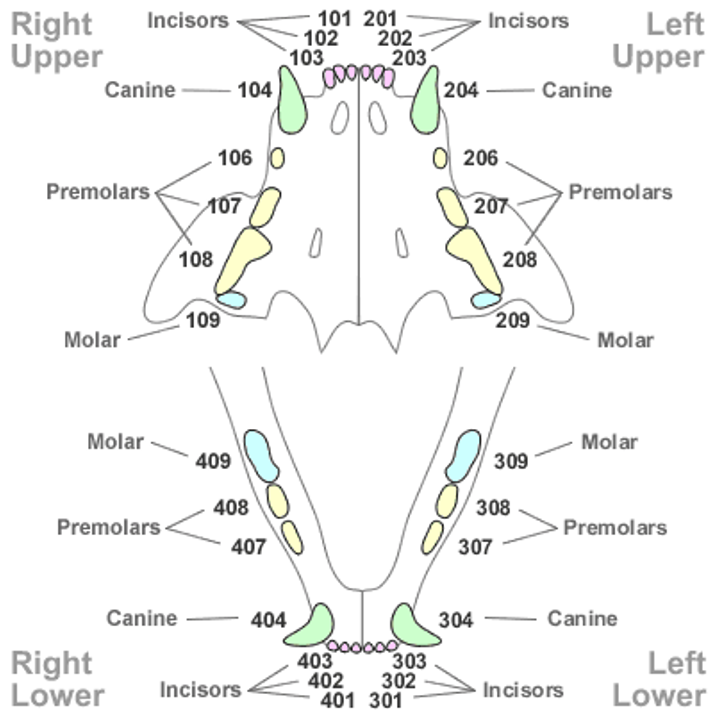
feline dental chart
69
New cards

canine dental chart
70
New cards
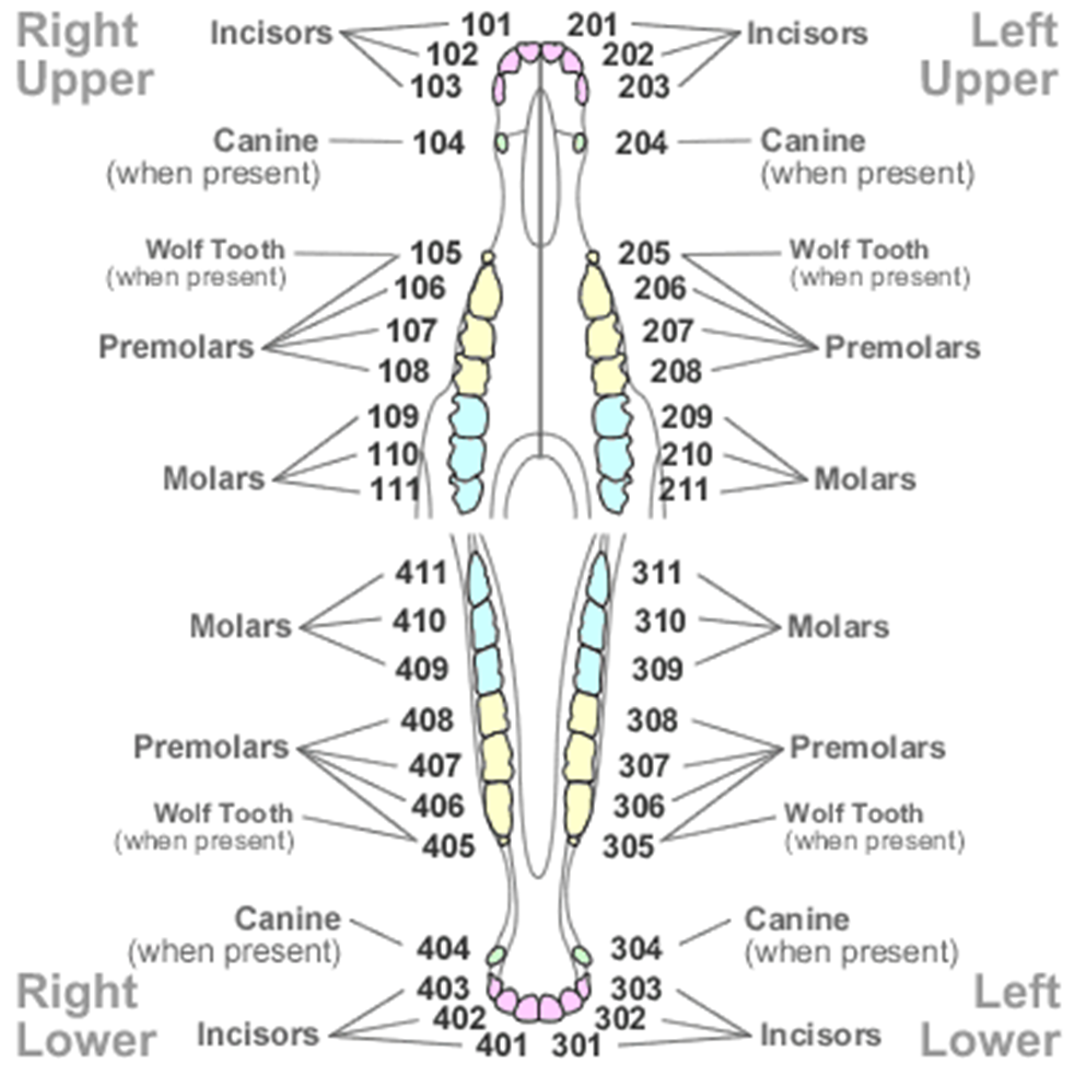
equine dental chart
71
New cards
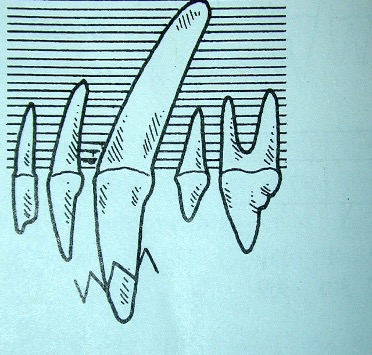
crown fracture - FX
72
New cards
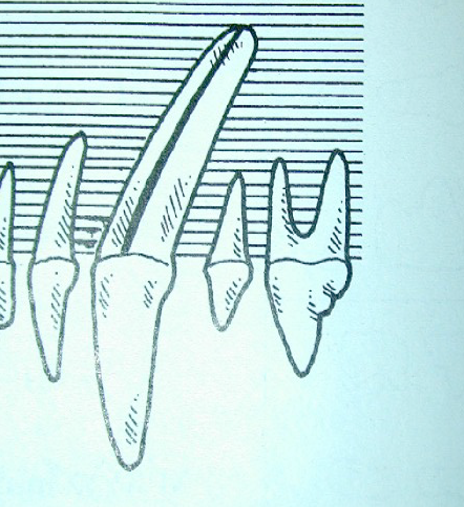
root canal therapy - RCT
73
New cards
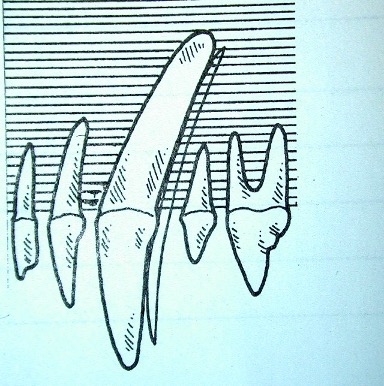
retained deciduous tooth - RD
74
New cards
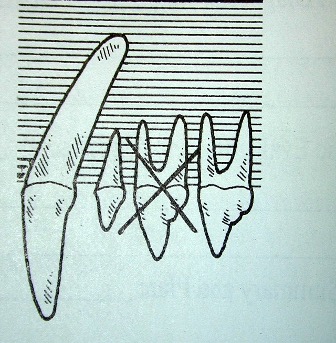
simple extraction - X
extraction with sectioning - XS
surgical extraction - XSS
extraction with sectioning - XS
surgical extraction - XSS
75
New cards
convert energy from power source into soundware
ultrasonic
76
New cards
compressed air used has cooling effect, making it less likely to cause heat damage to teeth
sonic
77
New cards
not recommended due to easily damaging tooth
rotary
78
New cards
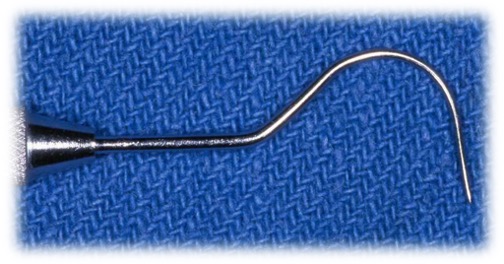
most common explorer
shepherd’s hook
79
New cards
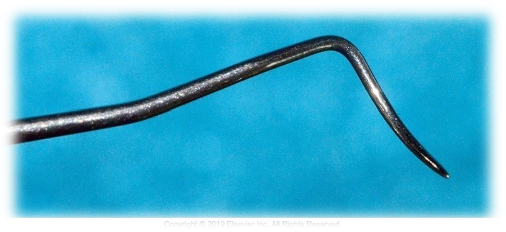
other explorer
pigtail
80
New cards
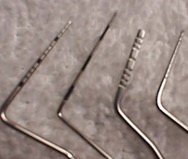
measure pocket/sulcus depths around a tooth to check health of periodontium
periodontal probes
81
New cards
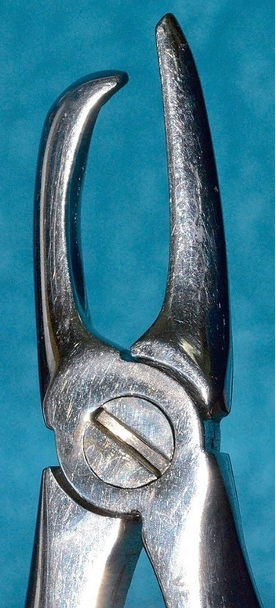
quick removal of large pieces of calculus
calculus removal forceps
82
New cards
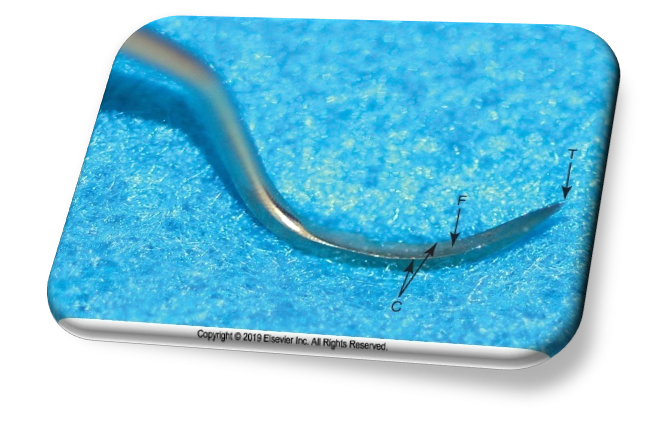
three sharp sides; supragingival only to scale calculus
scalers
83
New cards
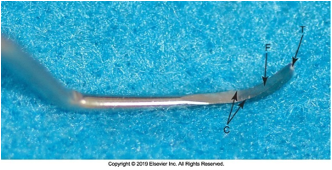
two sharp sides with round toe; removes calculus supragingivally and subgingivally
curettes
84
New cards
cavity prep
pear shaped
85
New cards
cut teeth and give access to root canal
crosscut fissure bur
86
New cards
supragingival cleaning
beaver tail
87
New cards
restoration
finishing burs
88
New cards
subgingival cleaning
perio probe
89
New cards
supragingival cleaning
scalers
90
New cards
GR
gingival recession
91
New cards
M
mobility
92
New cards
O
missing tooth
93
New cards
P (Pp)
periodontal pocket
94
New cards
FE
furcation exposure
95
New cards
GH
gingival hyperplasia
96
New cards
RE
root exposure
97
New cards
RL, FORL, Fdr
resorptive lesion
98
New cards
RR
root resorption
99
New cards
painful response is recognized by CNS through a process known as
nociception
100
New cards
transformation of energy from a painful stimulus into nerve impulse (inhibited by local anesthetics, NSAIDs, and opioids)
transduction